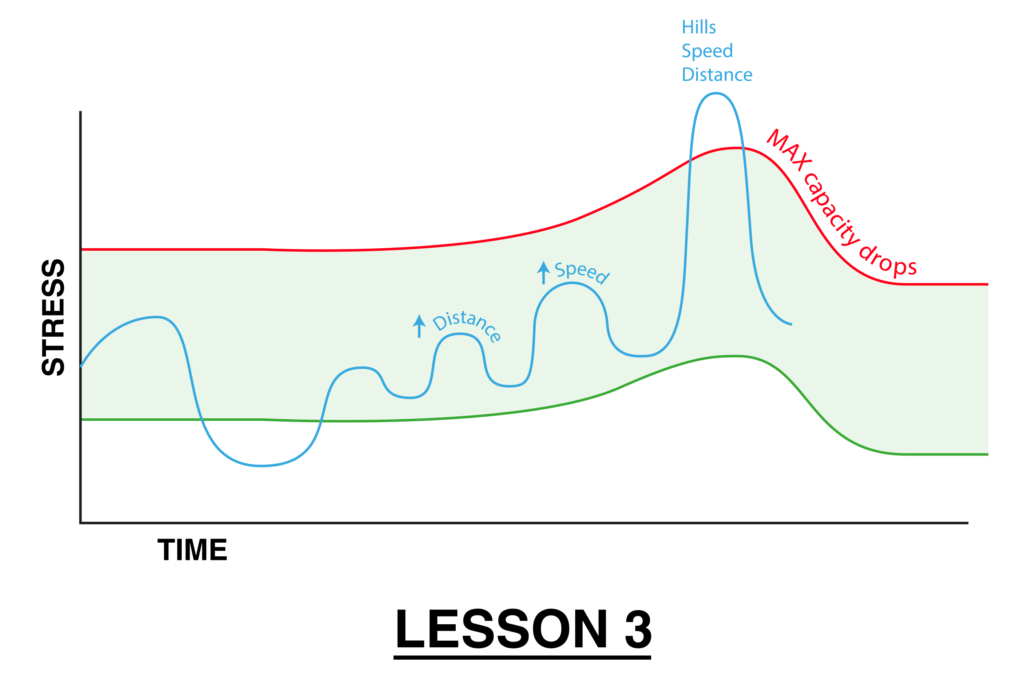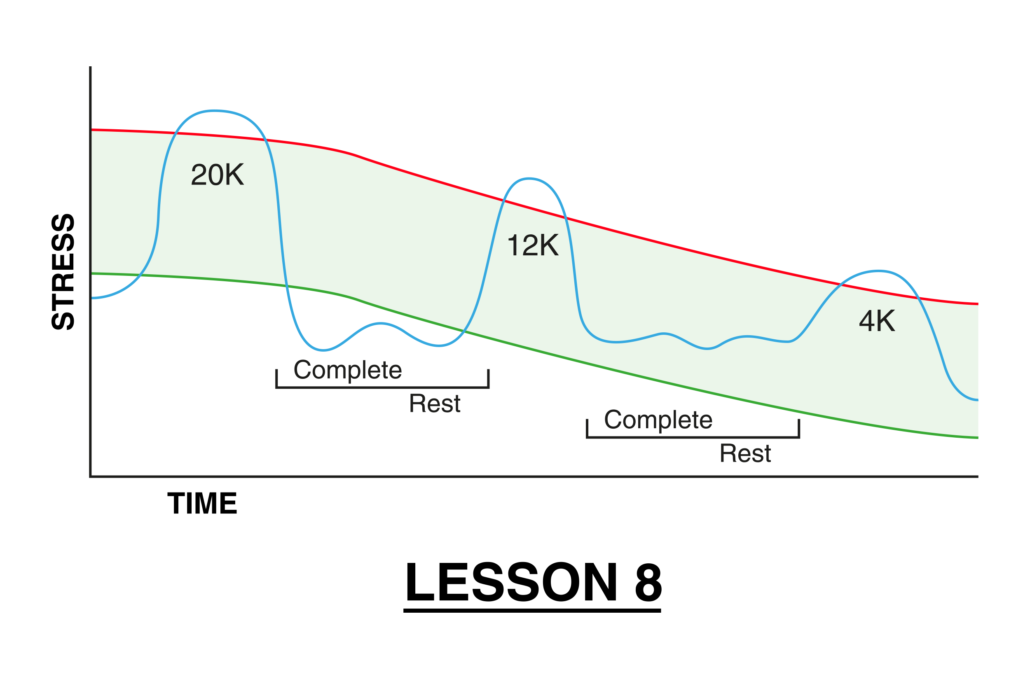Tendon pain: The top 3 tips all runners should know

This will help you with the prevention and management of most lower limb tendinopathies including plantar fasciitis, achilles, high hamstring, patella and hip tendinopathies. This is because lower limb tendons respond in a similar fashion to load and training errors. So here are the top 3 tips when dealing with tendon pain.
Tip #1: Tendon pain is caused by spikes in training load
A tendon reaction will occur if there is a spike in load that exceeds its ability to adapt. To understand this concept, imagine that every tendon in your body has a certain maximum load capacity. Then, if you train just below this capacity in time it will adapt and get stronger, further increasing its capacity. This is called ‘working within your adaptation zone’ illustrated below by a picture from my e-book. If however, there is a spike in load which exceeds a tendon’s load capacity it will signal pain. These spikes can come in several forms including hills, mileage, intensity, change in shoe type or change in surface. A sudden increase can also be in one training session or over the course of a week.

Tip #2: Avoid resting a painful tendon
Never completely rest a sore tendon! I often discuss this concept as the ‘pain-rest-weakness downward spiral’. When someone overloads their tendon in training the tendon’s capacity temporarily drops! This is because the tendon structure has less ability to tolerate loads while it is in this sensitive state. However, if you then rest for 1-2 weeks because of pain then capacity drops further! What often follows is a runner’s attempt to run on a weak tendon which produces another flare-up. This is often followed by more rest and the cycle continues. See the illustration below which depicts the onset of symptoms whenever a runner returns to running. But on the contrary, there is plenty of evidence to show it is safe to load a sore tendon. So find a health professional, find your starting point and begin a well-structure loading program.

Tip #3: Monitor tendon pain over 24 hours
Correctly interpreting tendon pain is crucial for recovery, but tendon symptoms are often misleading. For example, tendon pain often reduces when you have warmed up, allowing you to run almost pain free. Most runners would interpret this as ‘safe’, and give themselves permission to continue running. However, this is dangerous, because you will be unable to accurately determine if the tendon is overloaded until you observe pain over 24 hours. Pain may increase later in the day or the following morning. If this is the case, your current running load is excessive and needs to be adjusted.
Relevant Blog posts:
- How To Decipher Good Pain & Bad Pain
- Managing your healthy tendons when returning to the gym
- Why am I getting achilles pain?
